06 Sep La Palma eruption – August 2023
La Palma eruption – August 2023
Monthly summary
Science:
- PEINPAL restructures: The Insular Emergency Plan of La Palma (PEINPAL), the committee which currently oversees the scientific management of the Volcanic (Level 1) Emergency, is undergoing restructuring. This is said to make it a more participatory forum with more operability and involves incorporating citizens and entities affected by the eruption, who before were not part of the committee.
- Cooling of the main cone: Thermal drone measurements by INVOLCAN have confirmed that incandescence can still be observed in places, with temperatures in these areas still above 500°C.
- Geothermal reservoirs: A new study by PhD student Iván Cabrera-Pérez has used seismic noise tomography to image beneath the Cumbre Vieja ridge, detecting a low-speed anomaly on the south-west slope of the ridge, which characteristics typically associated with geothermal reservoirs.
- Ash for lunar soil: A study by INVOLCAN and The Open University has highlighted potential uses for the ash from the eruption. These include being a terrestrial analogue for the Moon’s regolith, where they confirmed that plants can grow in pots of the ash.
- Gases in La Bombilla and Puerto Naos:
- The Cabildo de La Palma looks towards October to begin a return home for some residents of La Bombilla and Puerto Naos, who have been evacuated for 23 months due to high diffuse CO2 emissions. This includes the Los Lajones area, the northern area of La Bombilla, and access to higher levels of buildings where dangerous CO2 levels have not been observed for months. This involves the addition of many extra sensors, taking the total number of sensors up to 2,000, and other measurements for the safety of those returning. The 91 still housed in hotels from the area may also be transferred back to accommodation in the area if gas levels allow.
- As well as forced ventilation pilots, the Cabildo de La Palma is considering the possibility of creating underground infrastructure that can expel some of the CO2 into the sea, making the area more habitable.
- Puerto Naos will have a future, but not in the short term, according to the Mayor of Los Llanos de Aridane, as there are still localised areas that show levels of CO2 incompatible with life, and so the full reopening of the area will not happen in the short term.
- Recovering soil for bananas: Technicians have been studying the recovered agricultural land at the edges of the lava flows, to understand the steps needed to be taken so these recovered areas can once again be used for banana production. The farms will be studied both outside and under greenhouses, to understand how ash is incorporated into the soil and its impact of productivity.
Aid:
- Tierra Bonita aid vouchers: The Tierra Bonita charity has distributed €30,000 of aid vouchers to the most vulnerable affected by the eruption, for food, clothing and fuel. This is in agreement with the media company I Love The World, using profits from their charity book ‘The Other Stories of the Volcano’. This help can be applied for through the Hagamos Pueblo association.
- Volcano Law: The ‘Volcano Law’, a citizen-lead law to guarantee legal protection to the population in the face of volcanic eruptions in the Canary Islands, has reached the necessary 15,000 signatures to be debated and voted on in the Parliament of the Canary Islands, with a month still to collect signatures. The commission promoting the law have urged the government to approve it by December 13th, the two year anniversary of the end of the eruption.
- Second home aid: The first package of aid for the loss of a second home due to the volcano has been confirmed. €4.5 million will be spread across 462 applications (€9,700 per application), many of which will cover multiple secondary homes. The maximum aid for the loss of a second home was previously announced at €4,000 per home, with lower limits for larger numbers of homes.
- Business and farm aid: The City Council of Los Llanos has opened the recovery period for aid for loss of farms, properties or businesses due to the volcano. Those will defects in applications or documentations will have 10 business days to rectify this, by the 8th September. This aid has a total amount of €950,000, and comes from funds that were at risk of disappearing, having not previously being mobilised since they were delivered in May 2022.
- SME Aid: The Ministry of Economy has announced €5 million in subsidies aimed at promoting the growth of small and medium-sized businesses, to promote the recovery of the economy post-volcano. The period for applications was open for 15 days between the 4th and 15th August.
- Help for partially buried farms: The Palmeran Association of Farmers and Ranchers has urged the government to provide aid to start up farms partially buried by the volcano. €26 million has been previously allocated to affected farms, although those farms of the edge of the lava flows could not access this first stage of aid.
- Loss of harvest payment: The Special Commissioner for Reconstruction has announced an aid payment for those who were unable to obtain a harvest of crops due to their farms being destroyed of otherwise damaged by the eruption.
- Aid for ranchers and farmers: The Department of Agriculture, Livestock, Fisheries and Water of the Government of the Canary Islands has begun the payment of €18,001,807 in subsidies for the reconstruction of agricultural production damaged by the eruption. 393 out of the 625 recipients of this aid have requested an advance payment of this aid, owing to the severity of the destruction.
- Tazacorte social emergency aid: The City Council of Tazacorte is assisting 400 families affected by the eruption through €550,000 from a subsidy from the Canary Islands Government. They will start from €1,000 per family unit in September.
Reconstruction:
- New homes: The Cabildo de La Palma has been urged to complete an agreement with VISOCAN for the delivery and building of homes for those affected. It is thought that the agreement will be for €7.5 million, for building 15 social housing units and purchase of 48 unfurnished homes.
- LP-2 recovery: The recovery of the 2.8 km of the LP-2, the main road closest to the cone of the volcano, could be done via emergency and begin before the end of the year according to Sergio Rodriguez, the President of La Palma. A feasibility analysis is already underway, as the area is covered by some of the thickest lavas.
- New roads: A new road has been proposed to aid travel around the area whilst the LP-2 remains unrecovered. This proposed route would connect the La Cumbre tunnel with Los Llanos, and improving access to some residences that were cut off due to the eruption.
- Delays in decree laws: The Government of the Canary Islands has again been urged to approve the two reconstruction decree laws, one for the reconstruction of homes and one for the agricultural recovery. Both of these have been through many draft revisions and have been delayed passing through parliament. It is thought the final drafts are ready, and that they just need approval from the Canary Islands Government.
- Slow economic recovery in La Palma: An economic situation report by FEDEPALMA has said the data from the island is ‘not very encouraging’. Some of the biggest areas that have not reached pre-pandemic levels include hospitability and agriculture, both thought to be related to the damage of the eruption. La Palma is also the only Canary Island to experience a rise in unemployment in the last year, which now exceeds 5%.
- Homeless residents: 91 affected residents remain housed in hotels 23 months after the eruption, mostly residents of La Bombilla or Puerto Naos who are unable to return to their homes due to high CO2 levels.
- Paradigms of reconstruction: An economist from La Palma, Pedro Higinio Álvarez, has said La Palma should follow an ecological and sustainable recovery plan. He claims the current recovery model, leaning towards mass-tourism, is collapsing on other Canary Islands and creates a false dilemma between mass-tourism and economic downturn.
Other updates:
- Avocado prices: The price of avocados in the Canary Islands has reached €13-16 per kilo, compared to €3 per kilo in Barcelona. Part of this is said to be due to the loss of avocado crops in La Palma, due to the lava and ash from the volcano.
- Mental illness: A psychologist has called the slowness of the reconstruction ‘Another volcano’ for those affected. They also made the point that as well as personal factors dictating how well people process the event and recovery, there are also environmental factors such as the uncertainty in reconstruction that exacerbates existing issues for people.
Sources: La Palma Ahora, Cabildo de La Palma, El Time, ABC España, El Valle de Aridane
Photography and Videos
Access photography that was taken around this time:
News articles
Read more about stories from La Palma in local newspaper articles from August 2023: To see our full news archive, visit our open data section or click here.
News and Interviews
Access our archive of news articles here.
Interactive Road construction map
Come back soon to access this map.

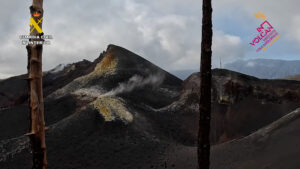
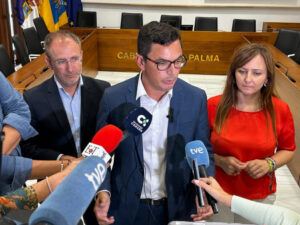
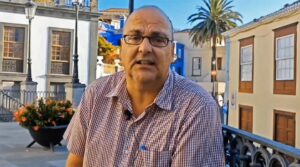


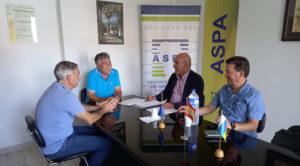
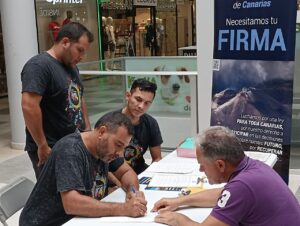
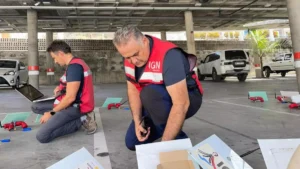

No Comments